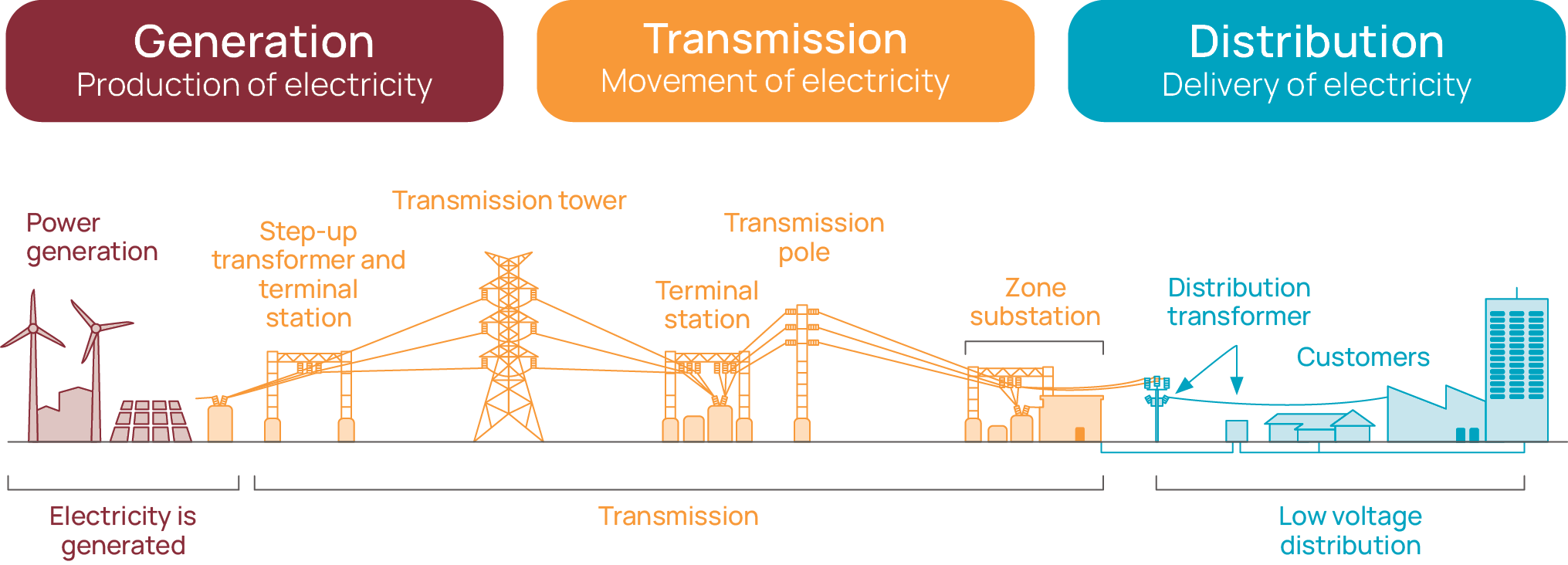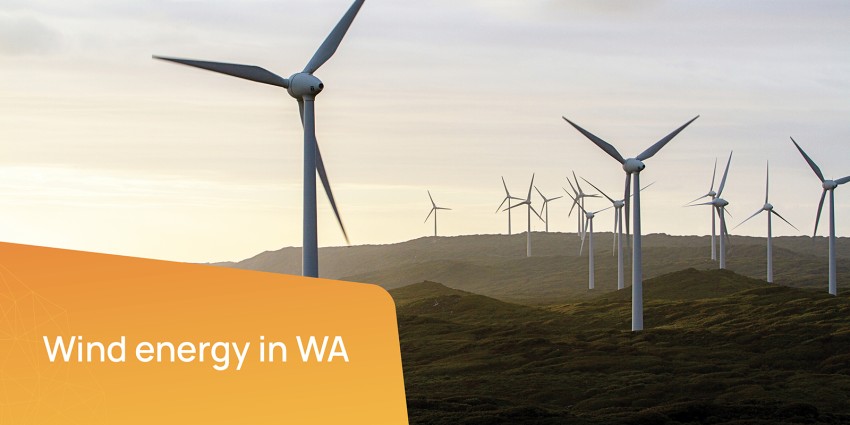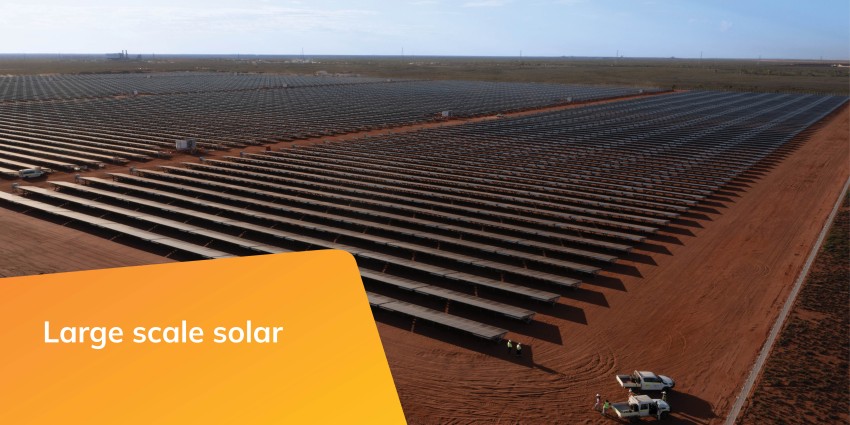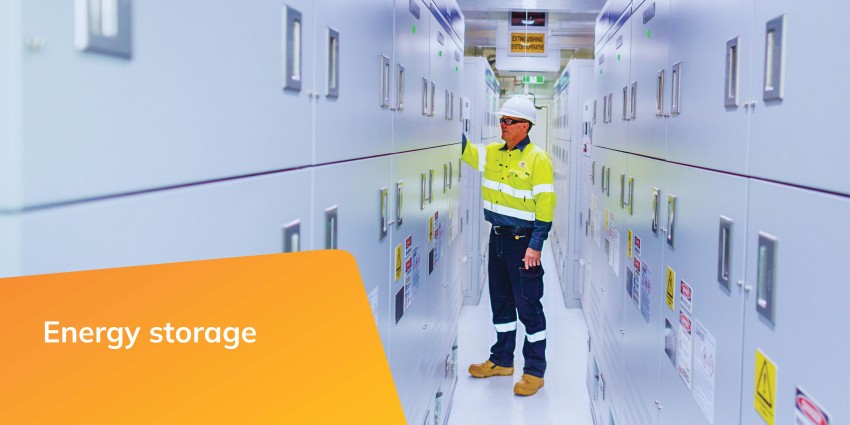Transmission networks can be considered a ‘super highway’ that carries electricity through towers and wires to homes, businesses, and communities in WA.
In the past, electricity was mostly made from coal or gas plants located near where it was used. Now, as we switch to renewable energy sources like solar and wind, we need to generate power in places with the best sunlight and wind. This requires new transmission connections.
How electricity moves through WA’s energy system
Electricity moves through the power system the same way water moves through pipes. Here's how it works:
- Generation: Electricity is created from different sources of energy — like coal, natural gas, wind, or solar — to generate power.
- Step up Transformers & Terminal Stations: The electricity generated reaches a terminal station, where it is prepared for the next stage of the journey. To prepare transporting the large volumes of electricity long distances, the voltage is ‘boosted’ by step-up transformers. This helps it to travel without losing too much energy.
- Transmission Towers: The high-voltage electricity travels through tall transmission towers and long transmission lines. These lines carry the electricity over great distances, with the voltage still high to minimize energy loss.
- Zone Substation: The electricity passes through a zone substation, where it is controlled and directed to the places it needs to go.
- Distribution transformer: The electricity travels through smaller distribution transformers and distributions lines, which deliver power directly to where it is used, such as homes, schools and businesses.
The difference between transmission and distribution
Transmission and distribution networks are similar in many ways, but transmission networks operate on a much larger scale with a greater power capacity. There are some key differences between transmission and distribution networks.
Transmission networks
- Once electricity is generated by a coal, gas or renewable energy generator, it is sent through a transformer within a substation to ‘step up’ the electricity into higher voltages. This means it can be transported in high volumes along the transmission network.
- You might recognise transmission towers as the steel lattice towers that carry large power lines high overhead.
- When the electricity arrives closer to its destination, another substation then ‘steps down’ the electricity into lower voltages. This is where the distribution network begins.
- With improved transmission infrastructure, electricity networks become more resilient and reliable for customers. For example, with a more interconnected grid, there are more pathways for electricity to travel along. If one part of the network is interrupted, electricity can still be safely transported to where it is needed.
Distribution networks
- Distribution networks move electricity at lower voltages from transmission networks through power poles and power lines to electricity customers.
- Distribution transformers convert the higher voltages of electricity from the transmission networks into lower, safer voltages to be sent out to homes, businesses and other electricity users.
- Distribution networks are connected to substations which are usually supplied by more than one transmission line. This means if one transmission line is off, another line can still deliver electricity to the distribution network.
Common-Use Transmission
Common-use transmission means having one main set of power lines which everyone can use, rather than having many separate power lines running across different spaces. This kind of transmission is important because it means:
- Fewer lines: By sharing transmission lines, we don’t need to build as many. This creates less impact on the land and nature, which is better for the environment.
- Better connections: Common-use transmission helps connect different sources of renewable energy, like wind and solar farms, to the places where people need electricity. This way, we can use more clean energy.
- Higher voltage: These shared lines are usually designed to carry high voltage electricity. They need to be tall and strong to transport energy efficiently over long distances.
Different types of transmission towers are used depending on factors like the amount of electricity being carried, the landscape, weather conditions, and safety requirements.
Transmission Corridors
Transmission corridors are specific areas or strips of land for high-voltage power lines, transmission towers and associated infrastructure to be built and maintained. This land is usually cleared of trees and other structures, which is crucial for safety as it prevents the power lines from coming into contact with anything that could cause accidents.
The width of a corridor will depend on several factors, including the voltage of the power lines, the type of terrain, and local regulations. Higher voltage lines usually need wider corridors for safety reasons, and to allow for the taller transmission towers. Keeping the area clear also makes it easier for workers to access the lines for maintenance and repairs for a reliable electricity supply.
Many stakeholders, including Traditional Owners, businesses and government agencies are involved in planning the location of these transmission corridors. Exclusion zones are identified for a range of safety, environment and cultural reasons.
Underground power: Distribution and transmission networks
As our transmission networks expand across WA, some components may need to be built underground. This could happen when the transmission of electricity above the ground isn’t feasible because of space constraints or significant overhead risks, such as areas near airports.
The potential challenges posed by underground transmission include:
- Higher costs: Developing underground power lines is usually much more expensive than building above-ground lines.
- Limited distance: The high-voltage cables used underground work effectively over short distances but can struggle to deliver across long distances because of the large amount of electricity they carry.
- Land disruption: Installing these cables requires significant digging, which disturbs the land and makes it difficult to use that area for other purposes during construction.
- Longer construction time: Building underground transmission lines can take a considerable amount of time which can delay the availability of electricity.
- Slower repairs: If there’s a power outage, it often takes longer to diagnose and fix problems with underground lines compared to above-ground options.
Despite these challenges, there may be instances where underground transmission will be the best option to maintain a safe, secure and reliable network.









